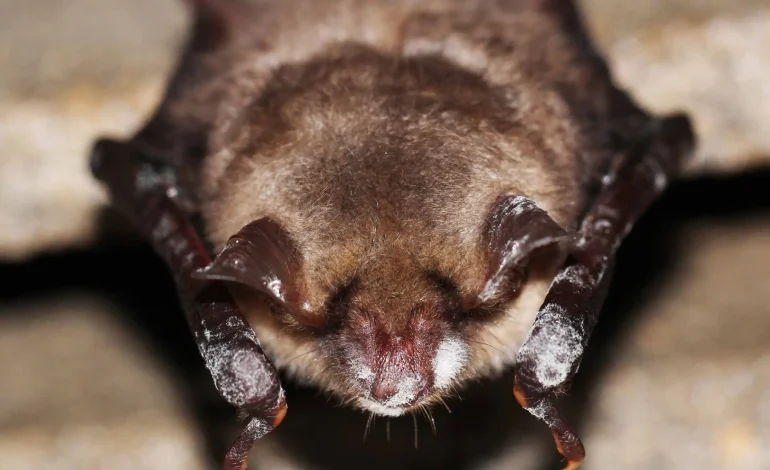Scientists Identify Second Fungus Species Behind White-Nose Disease, Raising Concerns for North American Bats

A newly identified species of fungus could pose an emerging threat to North American bat populations already devastated by white-nose disease, according to a recent international study, the New York Times reports.
Researchers have discovered that what was previously considered a single fungus responsible for the disease is actually two distinct species, with only one currently present in North America.
The initial outbreak of white-nose disease in North America was first documented in 2006, when biologists in New York State encountered mass die-offs of hibernating bats. The deaths were caused by a fungus then new to science, Pseudogymnoascus destructans, or P. destructans, which grows in cold environments and attacks bats while they are in hibernation.
The disease, named for the white fungal growth it causes on the faces and wings of infected bats, has since spread to 40 US states and nine Canadian provinces. It has caused one of the most significant wildlife mortality events ever recorded due to a pathogen, killing millions of bats across the continent.
In a new study led by Sébastien Puechmaille of the University of Montpellier, researchers analyzed over 5,400 samples of the fungus collected across Europe and Asia. They found that P. destructans is not a single species, but two genetically distinct species they are temporarily calling Pd-1 and Pd-2. Only Pd-1 is known to be present in North America.
Both fungal species are found in Europe and Asia, where they evolved alongside local bat populations over millions of years. In these regions, the fungus rarely causes mass fatalities. However, when Pd-1 arrived in North America, the local bats had no immunity or evolutionary history with the pathogen, resulting in widespread mortality.
Through genetic analysis, the researchers traced the likely origin of the North American outbreak to the Podillia region in Ukraine. It’s believed that the fungus may have been accidentally transported on caving equipment used by explorers traveling between Ukraine and the United States, possibly in the early 2000s.
The discovery of a second fungal species, Pd-2, raises concern that another outbreak could occur if it were to arrive in North America. Pd-2 infects some bat species not severely affected by Pd-1, suggesting that previously resilient populations might be vulnerable to this second variant.
Dr. DeeAnn Reeder, a disease ecologist at Bucknell University who was not involved in the study, described the possibility of a second outbreak as alarming.
“It’s like a reboot,” she said. “I think it’s terrifying, honestly.”
The study underscores the importance of stringent biosecurity measures to prevent the accidental introduction of new pathogens. Dr. Puechmaille recommended that caving gear not be transported between countries and that it be properly disinfected between uses, stressing that even a single fungal spore could spark a new epidemic.









The latest news in your social feeds
Subscribe to our social media platforms to stay tuned